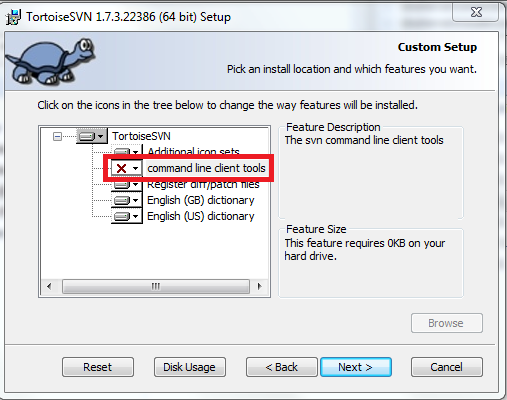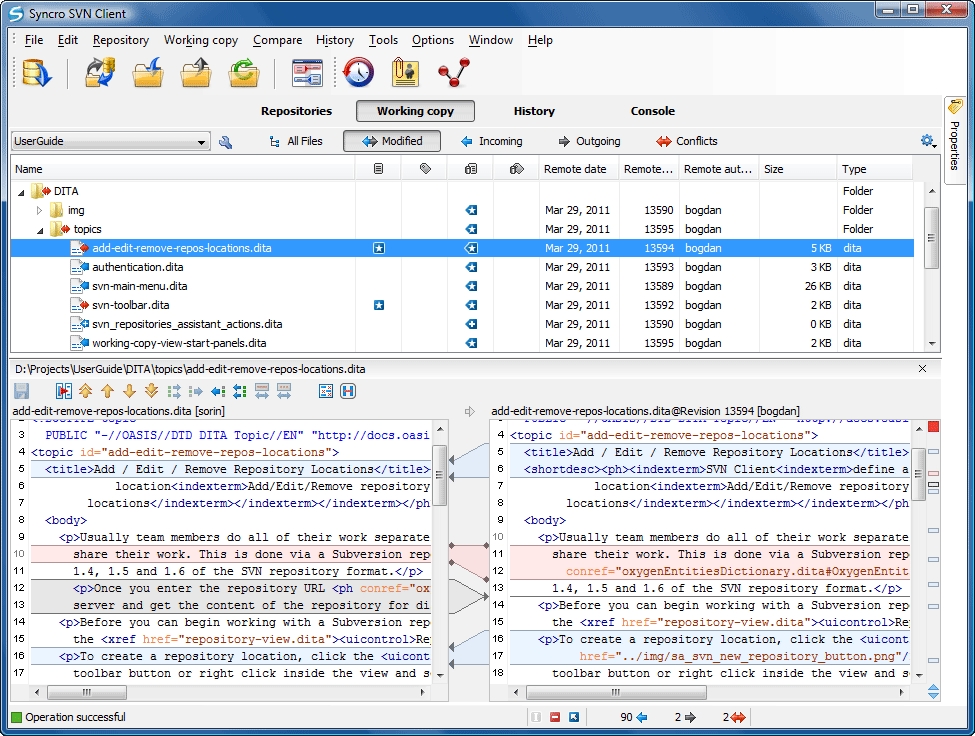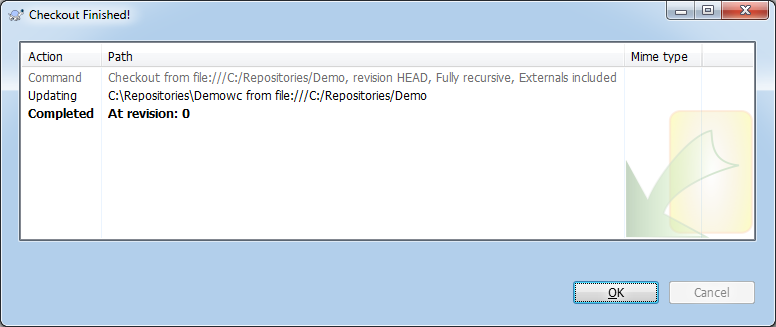

Svn checkout update#
This is an older and less flexible way to achieve a similar effect: svn checkout -non-recursive svn update trunk/foo

That way you can see which directories exist in the repository.Īs mentioned in answer, you can also do a non-recursive checkout. I believe the following should do it: svn checkout -depth empty svn update -set-depth infinity proj/fooĪlternatively, -depth immediates instead of empty checks out files and directories in trunk/proj without their contents. Indeed, thanks to the comments to my post here, it looks like sparse directories are the way to go.
Svn checkout free#
Many people running Windows prefer the free TortoiseSVN program.Svn – Can you do a partial checkout with Subversion? There are several other SVN clients available for your specific operating system. You need to interact with this server using an SVN client.

We have the SVN server running on the CS network. In general, you want to avoid this situation as the clean up can be time consuming. If you instead try to run svn update, SVN will attempt to merge the changes together if possible. Any attempt to run svn commit in this situation will fail. In this case, you had an old version of the file in your working copy and made changes to that file. If, however, you have a file that is both locally changed and out of date, you will run into a conflict. In that case, you have the latest copy of the file from the server in your working copy and have yet to make any new changes. Every time you commit files in your working copy, you create a new version of your code.īoth the svn update and svn commit commands will do nothing if your file is unchanged and current. In this case, you must run the svn commit command to save those changes to the repository.
Svn checkout code#
If a file is instead locally changed and current, then there are new changes made in your working copy that have not yet made it to the central code repository. In this case, you must run the svn update command to fetch/pull the latest version of the file from the repository. For example, if a file is unchanged and out of date, that means your working copy has an old version of that file and a newer version is available on the code repository. there is a newer version in the SVN repository)Įxactly how each SVN command works depends on the state of each file. changes have been made in working copy) and out of date (i.e. there is a newer version in the SVN repository) no changes made in working copy) and out of date (i.e. there is not a newer version in the SVN repository) changes have been made in working copy) and current (i.e. no changes made in working copy) and current (i.e. Otherwise, you need to use the svn add command on each file and directory you added since you last checked out or updated your code.Īny file in your working copy that is being watched will be in one of the following states: You can automatically create and add a new directory to the SVN watch list by using the svn mkdir command. (Unless you are using Eclipse, which knows which files to include and which temporary files to exclude from the watch list.) If you add new files or directories, you need to let SVN know to watch these files too. SVN will automatically "watch" the files you checkout from your code repository for changes. You can then use various SVN commands to keep your working copy and code repository synchronized. This will make a copy of your code repository on your local system, and SVN will watch the changes you make to this working copy. You checkout a working copy of your code using the svn checkout command. For that, you need to create a working copy of your code on your local system. Your code repository on the SVN server is where your code is centrally stored, but not where you actually work on the code.


 0 kommentar(er)
0 kommentar(er)
